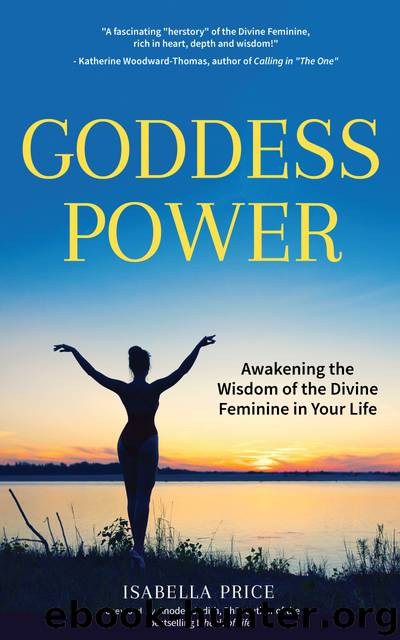Goddess Power by Isabella Price

Author:Isabella Price [Price, Isabella]
Language: eng
Format: epub
Publisher: Mango Media
Published: 2017-10-19T04:00:39+00:00
Symbolic Connotations of the Minoan Bull Dance Ceremony
The most singular aspect of Minoan religion, however, was the ritualistic bull dance that was eventually performed in the central courts of the great temple complexes. The objective of the young dancers was not to conquer the bull but rather to adjust their own skills, senses, and movements to those of the animal, and, in the broadest sense, to tune into the rhythm of nature. The young men and women chosen for this ritual possessed well—built, athletic bodies, and they worked as a team. The famous bull dance fresco from the palace of Knossos provides a detailed visual of three performing acrobats: a young male and two young females. In the palace fresco, the young man grasps the horns of the charging animal, performing a somersault. While leaping over the animal’s back, his hands pressed on the bull’s spine. If everything went well, which was usually the case, the young athlete would land in the outstretched arms of his waiting companion. Another exquisite representation shows a bull with its forelegs resting on a large rectangular block with a young athlete vaulting through its horns. The young men are depicted with red—brownish complexion while the young women are light—skinned, allowing the observer to easily identify them. Very different from the well—known Spanish bullfight – in which the animal is seduced and infuriated by the red cape, eventually leading up to its cruel death celebrated as a victory over the bull – the Cretan bull leaping ceremony rather emphasized the supreme skills and graceful movements of the performing acrobats who entrusted their lives to one another. The frescoes at Knossos suggest that the young men and women may also have invoked the bull’s magical power by vaulting over its back before the ceremonial slaying of the animal. Yet the final sacrifice of the bull to the Minoan Goddess has to be interpreted rather as an act of reverence to the animal and the raw powers of nature that it embodied. As symbols of her regenerative powers, bulls and bullhorns were sacred to the Goddess since Neolithic times. Finally, the ritualistic bull dance may have served as a means of placating the earth, since it was understood that the Goddess could express her displeasure with devastating earthquakes.
The celebration of the Goddess reached its epiphany in Minoan culture. Her significance gradually declined during the later part of the second millennium BCE, reaching near—total extinction during the Iron Age in the first millennium BCE across the cultures.
Download
This site does not store any files on its server. We only index and link to content provided by other sites. Please contact the content providers to delete copyright contents if any and email us, we'll remove relevant links or contents immediately.
| Africa | Americas |
| Arctic & Antarctica | Asia |
| Australia & Oceania | Europe |
| Middle East | Russia |
| United States | World |
| Ancient Civilizations | Military |
| Historical Study & Educational Resources |
Cecilia; Or, Memoirs of an Heiress — Volume 1 by Fanny Burney(32495)
Cecilia; Or, Memoirs of an Heiress — Volume 2 by Fanny Burney(31909)
Cecilia; Or, Memoirs of an Heiress — Volume 3 by Fanny Burney(31892)
The Secret History by Donna Tartt(18945)
Sapiens: A Brief History of Humankind by Yuval Noah Harari(14319)
Leonardo da Vinci by Walter Isaacson(13235)
The Radium Girls by Kate Moore(11970)
Sapiens by Yuval Noah Harari(5322)
How Democracies Die by Steven Levitsky & Daniel Ziblatt(5170)
The Wind in My Hair by Masih Alinejad(5056)
Homo Deus: A Brief History of Tomorrow by Yuval Noah Harari(4871)
Endurance: Shackleton's Incredible Voyage by Alfred Lansing(4719)
Man's Search for Meaning by Viktor Frankl(4502)
The Silk Roads by Peter Frankopan(4488)
Millionaire: The Philanderer, Gambler, and Duelist Who Invented Modern Finance by Janet Gleeson(4420)
The Rape of Nanking by Iris Chang(4165)
Joan of Arc by Mary Gordon(4053)
The Motorcycle Diaries by Ernesto Che Guevara(4050)
Hitler in Los Angeles by Steven J. Ross(3923)
